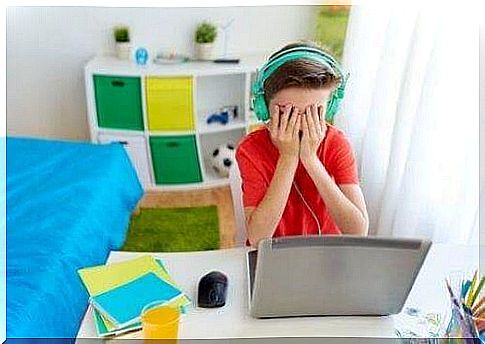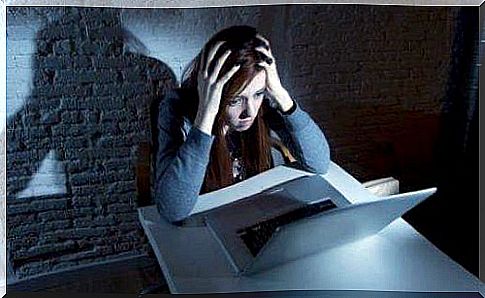Legal Aspects Of Cyberbullying In School

Cyberbullying at school is an annoying reality that many boys and girls experience today. It is also a form of violence that is increasing.
Cyberbullying has very negative effects on the well-being and development of children and adolescents. Moreover, it goes against the fundamental rights of the victim. It can cause great emotional and psychological damage to the victims and their families.
Unfortunately, officials are still not doing enough to address cyberbullying in schools, nor is it recognized in all seriousness by the institutions involved. This issue affects many factors, including psychological, educational, family, and the media … Below we’ll look at some of the legal aspects of cyberbullying in school.
What is cyberbullying in school?
Cyberbullying at school is a form of harassment. It is a form of violent and negative interaction that takes place among students, but in the context of social media. It has to do with social relationships at school. Discrimination, homophobia and oppression are among the types of cyberbullying that occur in school.
Cyberbullying is a type of psychological persecution that one student inflicts on another. The bully chooses the victim and carries out repeated attacks. It is a negative and conscious action that the victim cannot avoid in the school environment, nor can he tackle alone.
For an example of aggression to be considered a case of bullying, there must be a situation of inequality between the perpetrator and the victim. That inequality can be physical, psychological or social.
There is also a clear intent to cause harm. Bullying is generally a form of aggression that is continued or repeated over and over again.
Differences between bullying and cyberbullying
It is true that cyberbullying has many of the same characteristics as regular bullying at school. However, cyberbullying is unique in that the attackers use new technologies to humiliate, intimidate, harass and threaten their victims. The main media are social media, SMS, email and blogs…

The harm caused by this type of bullying is also different. With cyberbullying, there is an invasion of privacy. This mainly happens through the distribution of videos and compromising photos without the victim’s consent.
Another characteristic of this type of bullying is that the impact is greater and more public. The number of people seeing the compromising photos or information is much higher than traditional school bullying.
Moreover , cyberbullying has a wider reach because its consequences can also be felt outside of school. It follows the victim at all times and is shared everywhere.
Legally, both school bullying and cyberbullying constitute a fundamental violation of the rights of minors. These two types of violence cause enormous psychological damage to the victims and their families.
Sometimes the consequences are fatal. Bullying has led to the suicide of young victims. For example, despite the seriousness of the situation, the Criminal Code does not recognize bullying or cyberbullying in the Netherlands.
The Criminal Code does not recognize bullying at school
When pronouncing criminal sentences for instances of bullying or cyberbullying at school, the Criminal Code obliges judges and tribunals to apply only the existing sentences in the Criminal Code.
These loopholes exist because the Criminal Code does not set a penalty for harassment. Depending on the situation and the intensity of the bullying, we can be confronted with different types of crime.
Even in extreme cases, such as when cyberbullying at school ends in the victim’s suicide, no bully has ever been prosecuted or punished in our country.
Threats and coercion are common in school cyberbullying. In these cases, you could apply the crime of “threat” or “stalking” (Article 285) or the crime of “slander” (Article 262). The crime of “insult” (Article 266) also applies in many cases.

In the event that photos or intimate videos of the victim that the aggressor shared without their consent are used, the following laws may be applied:
- Article 139F: Possession or use of a photograph taken in secret and used or transmitted via technology.
- Article 240B: Possession or distribution of child pornography
- Most cases of cyberbullying also involve the crimes of “libel” or “defamation” (Articles 261 and 262).
Hope for victims
If you suspect that your children are victims of a damaging case of cyberbullying at school, you should seek legal advice. It may take a lot of patience, but there is a need to see more of these cases as they arise so that there is more pressure to change the laws on them. Hopefully this will help to combat cyberbullying more effectively in the future.









